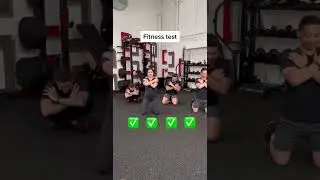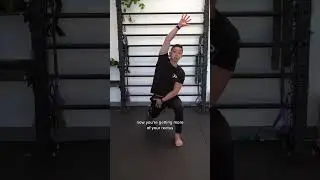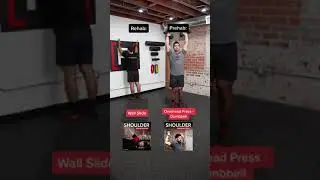Bench Press Without Shoulder Pain (3 Steps!) | Episode 1
Episode 1: Bench Press Without Shoulder Pain!
The barbell bench press is arguably one of the most effective movements in developing strength and power in the upper body. It’s a great way to train the primary pushers of the upper body, including the pectoralis group, the deltoids, and the triceps. Despite the bench press being such a vital movement to help with horizontal pushing, it is one of those movements that often times are limited secondary to shoulder pain, frequently in the front part of the shoulder. If bench pressing creates irritation in your shoulder, the answer is not to avoid bench pressing for 6 weeks, then one day magically you will be capable of bench-pressing pain-free. The worst thing to do is doing nothing, which would lead to even more weakness thus creating more of an issue. This video will take you through 3 steps to allow you to bench press without shoulder pain.
Whether it’s biceps tendinopathy, subacromial impingement, rotator cuff pathologies, labral pathologies, Stenoclavicular or acromioclavicular joints issues, it doesn’t matter. These steps don't change much with different pathologies. Although this article is largely discussing how you can train around pain, it is important to note that these steps are also from a prehab lens in potentially minimizing the risk of future injury. Here are the 3 steps!
Step 1- Improve your form
The way you choose to position yourself on the bench press can influence the degrees of stress placed on various joints greatly. We will separate your form into the set up and the movement.
Set up:
-Have your points of contact: head, shoulders, glutes, and feet.
-Tuck your feet in. This will allow a slight arch of your lower and mid-back which will keep tension in the base of the movement. This will additionally allow better use of the leg drive when bench pressing.
-Just eyes should be just underneath the barbell.
-Hand position: Place your hands directly in front of you when your arms are brought out to 90 degrees and your elbows are bent to 90 degrees. The width should be NO WIDER than 1.5 X your shoulder width. If unsure, it is likely safer to bias your hands more narrow than wide.
Performing the movement:
-Bend the bar and pull shoulder blades back: This will ensure scapula engagement. When bending the bar think about twisting your arms externally, to where the thumbs would face your head and pinkies are coming in together. Pulling the shoulder blades back is a crucial piece here, the pec’s move the shoulder's and what do the shoulders sit on? The shoulder blades. This is will also feed into some more of the mid-back arching which initially was created by tucking your feet in.
-Where should the barbell end up?
Males: just below nipple height
Females: around the bra line
-On the way down control the movement, don’t drop the weight. Keep your shoulder blades squeezed for the entirety of the movement. When lifting the weight, think about push yourself away from the bar.
Step 2- Modify the movement
Modifying the movement can be achieved by changing moment arms or by decreasing the range of motion one goes through when performing a bench press. This subtle change has helped so many of my patients and clients to bench pressing again pain-free.
Narrow Grip=decreases stress on the shoulder and increases stress on the elbows. Narrow grip bench pressing has been shown to increase activation of the clavicular head of the pec and the triceps brachii compared to a wider grip.
Go through partial range of motion
Step 3- Warm-Up
-Banded T’s 3x10 rep’s
-Shoulder Tap’s 3x10 rep’s
Read full article here: https://theprehabguys.com/bench-press...































